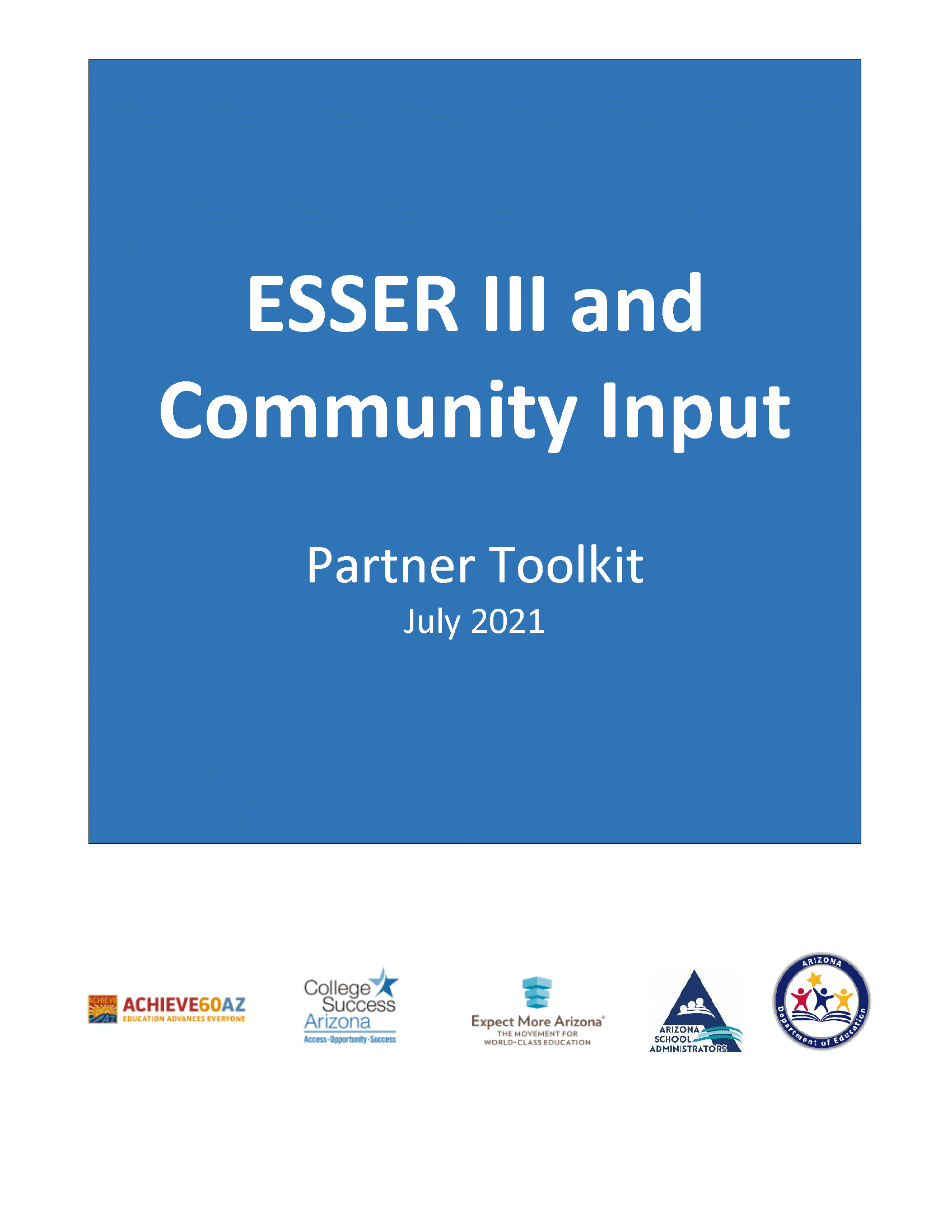
How to Be Involved in How Your School District or Charter School is using COVID Relief Funding
Arizona is receiving an estimated $4 billion to support K-12 education, the majority of which (90%) will go directly to school districts and charter schools based on their Title I funding allocations. Read more about this federal funding in our recent blog.
Schools and charter schools are required to create a plan and engage stakeholders, like you, on how their ESSER III funds should be used. The expectation is that diverse community voices are included in the plan, including students; families; teachers, school and district leaders, tribes, groups that represent students with disabilities, English learners, children experiencing homelessness, and others.
Your voice is important in this process. If you are interested in being involved, you should engage with your district’s school board or with your charter school’s principal. Start by looking up your school district, then looking up information on your school board or your charter school’s leadership. Your school or district’s website should have that information, along with the meeting dates for upcoming board meetings. Plan to attend (in person or virtual) the meetings where public comment and discussion will be held on these plans. You can share your feedback through public comment at the board meeting or by emailing your school board members directly.
Key Questions to Ask:
To get the conversation started, here are a few questions that you could ask your school district governing board or charter school about how the funds will be used:
- How much funding will the school/school district receive?
- Read more about the allocations made to LEAs to date. A third round of funding to LEAs will be available in late May 2021.
- How will priorities be set for how the funding will be used?
- How will we use the funding to close achievement gaps and help students most in need, especially those who are most disadvantaged or experienced the greatest unfinished learning from the 2020-21 school year?
- How can we use these funds to ensure that students have access and opportunity to pursue a postsecondary education?
- How will these funds be used to support student and teacher social and emotional needs?
- How can we use these funds to transform student learning, so we don’t return to business as usual in the fall?
- How will these funds help move the needle on the state’s Education Progress Meter goals? What’s the impact of these investments? How will we know?
Other Resources:
If you’d like to learn more, or dig into the details, check out these resources:
- ADE’s ESSER Funding Roadmap – azed.gov/covid-19/esser-roadmap
- JLBC’s Analysis of Federal COVID Relief Funds – azleg.gov/jlbc/COVID-19.htm
- US Department of Education’s Fact Sheet (ESSER III) – FINAL ARP-ESSER-FACT-SHEET.pdf (ed.gov)
Resources for Schools/Districts:
We know that ESSER III dollars could be incredibly valuable to districts and schools to support their plans to address student and staff needs, especially in the aftermath of the pandemic. We have also heard from various superintendents, district communications staff, and education partners that tools specific to the community input requirement for accessing ESSER III money would be helpful. In response to that feedback, we created this ESSER III Community Input Toolkit.

